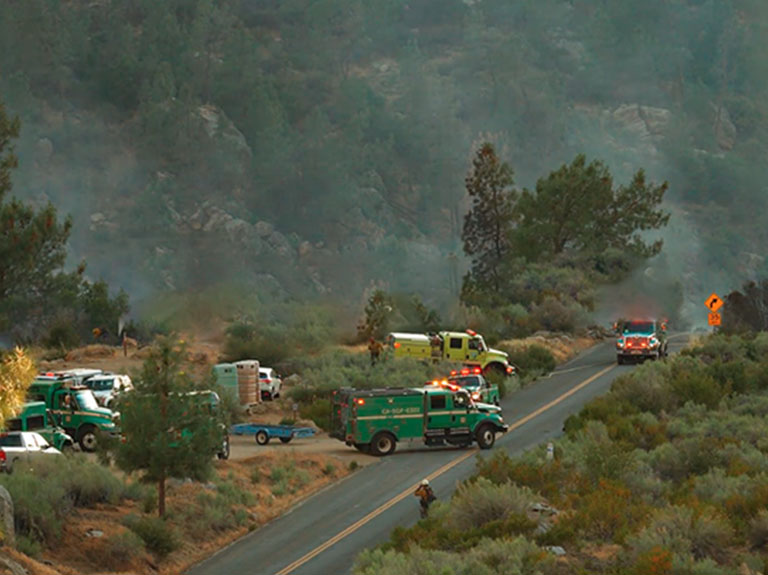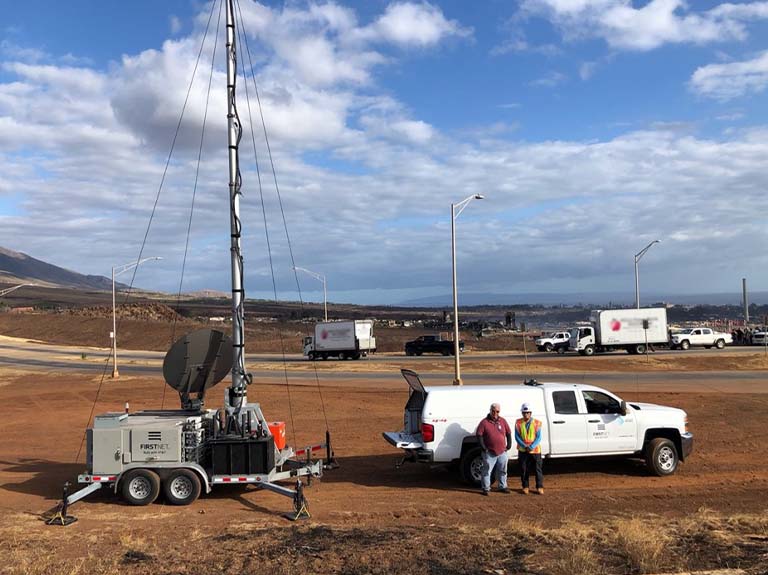As Hurricane Lane Approaches, AT&T Prepares Network, Offers Tips to Help You Stay Connected
We have started our storm preparedness process as Hurricane Lane tracks toward the Hawaiian Islands.
Our network preparations include:
- Topping off generators with fuel at our cell sites and switch facilities.
- Testing high-capacity back-up batteries at cell sites.
- Protecting our physical facilities against flooding with sandbags.
- Staging emergency response equipment in strategic locations for quick deployment following the storm.
We encourage Hawaii residents and businesses to prepare for the storm as well. Below are communication tips to help you stay connected.
Tips:
- Save your smartphone’s battery life. In case of a power outage, extend your device’s battery life by putting it in power-save mode, turning off Bluetooth and Wi-Fi, deleting apps, or putting your phone in Airplane Mode. This may prevent you from using certain features, but will ultimately save battery power.
- Keep your mobile devices charged. Be sure to have another way to charge your smartphone if the power goes out.
- Keep your mobile devices dry. Mobile phones can be a critical lifeline during a storm. To protect yours, store it in a water-resistant case, floating waterproof case or plastic bag. A car charger or back-up battery pack can come in handy. If you have multiple devices to keep charged, consider a multi-port back-up battery pack.
- Back up important information and protect vital documents. Back up insurance papers, medical information and the like to the Cloud or your computer. With cloud storage, you can access your data from any connected device.
- Have a family communications plan. Choose someone out of the area as a central contact in case your family is separated. Most importantly, practice your emergency plan in advance.
- Store emergency contacts in your mobile phone. Numbers should include the police department, fire station, hospital, and family members.
- Forward your home number to your mobile number in the event of an evacuation. Because call forwarding is based out of the telephone central office, you will get calls from your landline phone even if your local telephone service is down. If the central office is not operational, services like voicemail and call forwarding may be useful.
- Track the storm on your mobile device. If you lose power at your home during a storm, you can use your mobile device to access local weather reports.
- Take advantage of the camera on your smartphone. Be sure to use the camera on your phone to take, store and send photos and video clips of damage to your insurance company.
- Use location-based technology. These services can help you find evacuation routes and track a lost family member’s mobile phone.
- Be prepared for high call volume and keep non-emergency calls to a minimum. If there is severe weather, chances are many people will be attempting to place calls at the same time. The increased calling volume may create network congestion. If you get a “fast busy” signal on your wireless phone or a slow dial tone on your landline phone, hang up, wait several seconds and then try again.
- Try texting vs. calling. Because it requires fewer network resources, text messages may go through more quickly than voice calls.
Additional information on our preparation efforts for Hurricane Lane can be found here.


